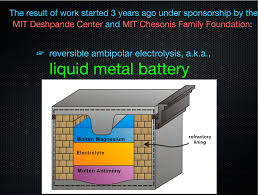
Breaking News
 The Fear-Mongering Rackets of the US National-Security State
The Fear-Mongering Rackets of the US National-Security State
 Gen-Z flexes new-age political muscle in Nepal
Gen-Z flexes new-age political muscle in Nepal
 Trump to sign EO directing investigation of 'crypto' debanking: report
Trump to sign EO directing investigation of 'crypto' debanking: report
Top Tech News
 Methylene chloride (CH2Cl?) and acetone (C?H?O) create a powerful paint remover...
Methylene chloride (CH2Cl?) and acetone (C?H?O) create a powerful paint remover...
 Engineer Builds His Own X-Ray After Hospital Charges Him $69K
Engineer Builds His Own X-Ray After Hospital Charges Him $69K
 Researchers create 2D nanomaterials with up to nine metals for extreme conditions
Researchers create 2D nanomaterials with up to nine metals for extreme conditions
 The Evolution of Electric Motors: From Bulky to Lightweight, Efficient Powerhouses
The Evolution of Electric Motors: From Bulky to Lightweight, Efficient Powerhouses
 3D-Printing 'Glue Gun' Can Repair Bone Fractures During Surgery Filling-in the Gaps Around..
3D-Printing 'Glue Gun' Can Repair Bone Fractures During Surgery Filling-in the Gaps Around..
 Kevlar-like EV battery material dissolves after use to recycle itself
Kevlar-like EV battery material dissolves after use to recycle itself
 Laser connects plane and satellite in breakthrough air-to-space link
Laser connects plane and satellite in breakthrough air-to-space link
 Lucid Motors' World-Leading Electric Powertrain Breakdown with Emad Dlala and Eric Bach
Lucid Motors' World-Leading Electric Powertrain Breakdown with Emad Dlala and Eric Bach
 Murder, UFOs & Antigravity Tech -- What's Really Happening at Huntsville, Alabama's Space Po
Murder, UFOs & Antigravity Tech -- What's Really Happening at Huntsville, Alabama's Space Po
Inside the Race to Build the Battery of Tomorrow

he lack of glamour is especially conspicuous on the lower floors of MIT's materials science department, where one lab devoted to building and testing the next world-changing energy storage device could easily be mistaken for a storage closet.
At the back of the cramped room, Donald Sadoway, a silver-haired electrochemist in a trim black-striped suit and expensive-looking shoes, rummages through a plastic tub of parts like a kid in search of a particular Lego. He sets a pair of objects on the table, each about the size and shape of a can of soup with all the inherent drama of a paperweight.
No wonder it's so hard to get anyone excited about batteries. But these paperweights—er, battery cells—could be the technology that revolutionizes our energy system.

 France's Fiasco
France's Fiasco Tiny briefcase engine boosts EV range beyond battery power
Tiny briefcase engine boosts EV range beyond battery power 

